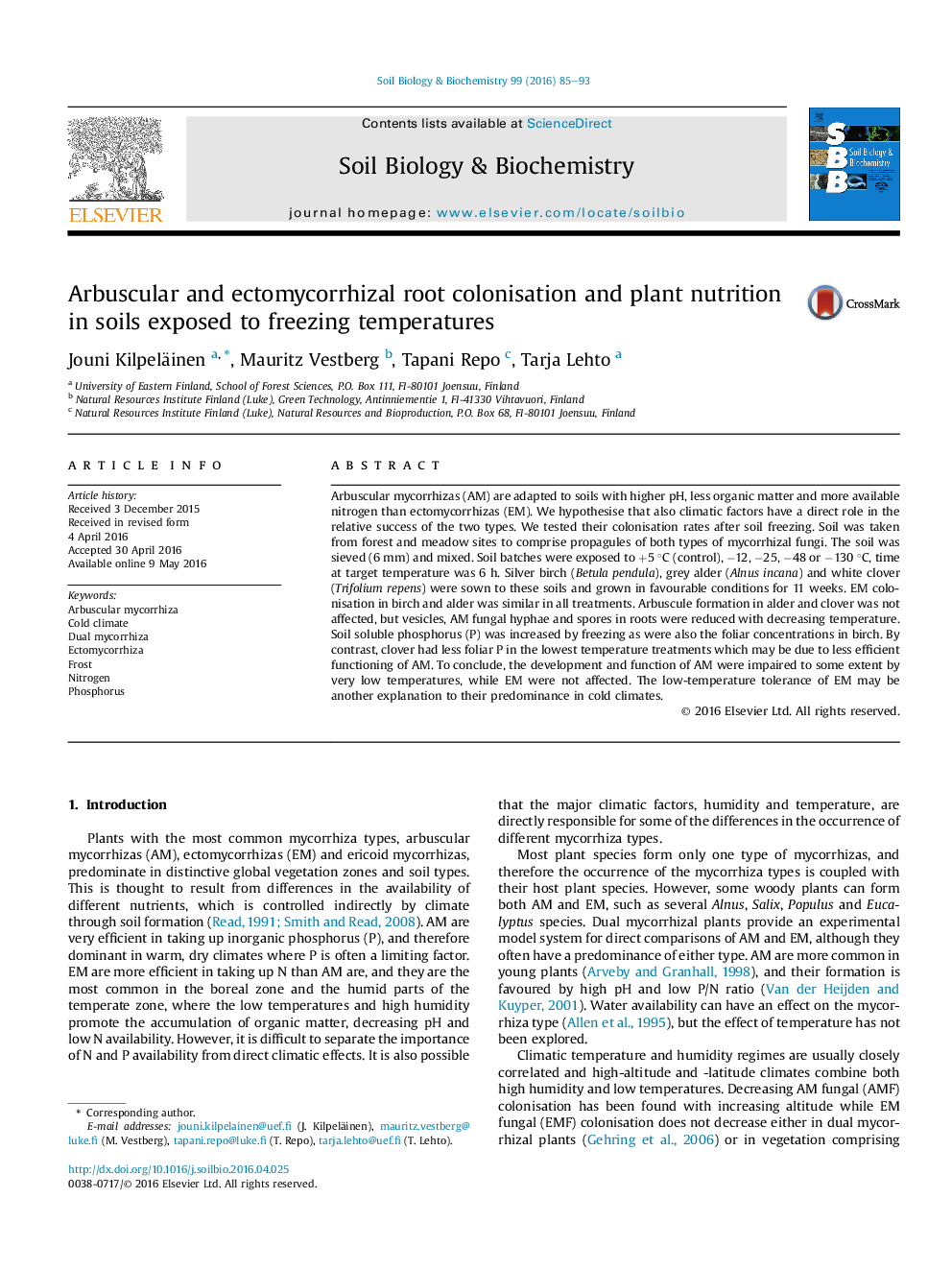| کد مقاله | کد نشریه | سال انتشار | مقاله انگلیسی | نسخه تمام متن |
|---|---|---|---|---|
| 2024300 | 1542585 | 2016 | 9 صفحه PDF | دانلود رایگان |
• Arbuscular and ectomycorrhizal formation was tested after treating soil batches with frost.
• Boreal mycorrhizal fungi survived in all soil frost treatments down to −130 °C.
• Ectomycorrhizal (EM) colonisation was similar in all soil temperature treatments.
• The coldest treatments decreased arbuscular mycorrhizal colonisation and phosphorus uptake.
• Frost tolerance of EM fungi may further explain their predominance in cold climates.
Arbuscular mycorrhizas (AM) are adapted to soils with higher pH, less organic matter and more available nitrogen than ectomycorrhizas (EM). We hypothesise that also climatic factors have a direct role in the relative success of the two types. We tested their colonisation rates after soil freezing. Soil was taken from forest and meadow sites to comprise propagules of both types of mycorrhizal fungi. The soil was sieved (6 mm) and mixed. Soil batches were exposed to +5 °C (control), −12, −25, −48 or −130 °C, time at target temperature was 6 h. Silver birch (Betula pendula), grey alder (Alnus incana) and white clover (Trifolium repens) were sown to these soils and grown in favourable conditions for 11 weeks. EM colonisation in birch and alder was similar in all treatments. Arbuscule formation in alder and clover was not affected, but vesicles, AM fungal hyphae and spores in roots were reduced with decreasing temperature. Soil soluble phosphorus (P) was increased by freezing as were also the foliar concentrations in birch. By contrast, clover had less foliar P in the lowest temperature treatments which may be due to less efficient functioning of AM. To conclude, the development and function of AM were impaired to some extent by very low temperatures, while EM were not affected. The low-temperature tolerance of EM may be another explanation to their predominance in cold climates.
Journal: Soil Biology and Biochemistry - Volume 99, August 2016, Pages 85–93
